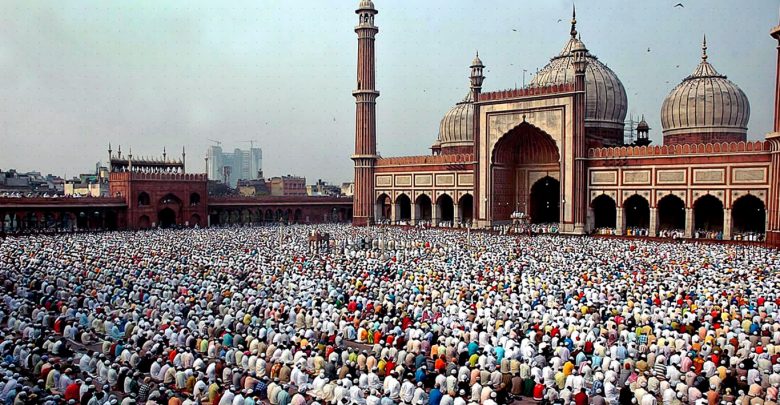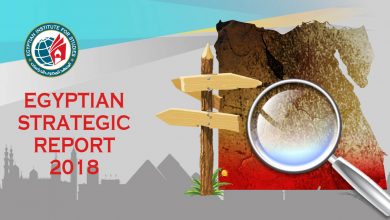
Status of Indian Muslims: Past, Present and future
Status of Indian Muslims: Past, Present and future
Introduction
India, a land of diversity, is home to more than 200 million Muslims, the second largest Muslim population on the globe, after Indonesia. The origin of Indian Muslims can be traced back to 7th century. Over the centuries the India Muslim population spread over across the Indian subcontinent and they exerted profound influence on the life, history, economy and culture of the sub-continent. It gave birth to many great thinkers and contributed immensely in shaping and influencing the lives of Muslims both in and outside India. For more than seven centuries the subcontinent was ruled by Muslims under different dynasty. In 1947, the subcontinent got independence from the British occupation after 200 years of colonial rule and was divided into two countries- and thus gave the birth of Pakistan, a new Muslim majority country. The brunt of participation on the Indian Muslims were immense as majority of the ruling elite and middle class shifted to Pakistan and left with poor Muslims to shape the future of India.
Growing Muslim Deprivation in India
In the post independent democratic India, with minimum support the Indian Muslims shaped their fortune and started slowly contributing in the national development. However, the deep-rooted social discrimination based on religion and ethnicity severely crippled their ability to influence and contribute in public spheres. Recognizing the enormity of the problem of growing Muslim marginalization and deprivation, in the year 2005 the Government of India commissioned Sacchar Commission under a High Court Judge with the mandate to ascertain the level of Muslim deprivation in the country. The report (1) highlighted damming facts about Muslim condition in the country and urged the government to take series of affirmative actions to address the issue. The Sacchar Committee highlighted that Muslims in India stand at par with some of the country’s most underprivileged groups, and pointed at acute social exclusion that translates in geographic isolation (ghettos) and obstacles in accessing employment and welfare schemes. Muslims constitute majority of prison population in India along with SCs and STs. 25% of beggars in India are Muslims whereas the population share stands at 14.23% of India’s total populations (2). Further, almost 57% of the 25% Muslim beggar population are females (3).
However, lack of political will along with hostile political environment in the country could not allow the government of that time to shape any concrete policy. In the year 2014 the Kundu (4) Committee was formed to review the recommendations of Sacchar Committee further re-affirmed the reality of Muslim deprivation in India, even after a decade of Sacchar report.
The array of targeted policies on positive discrimination though constitutional provisions have undeniably played essential role in challenging some of the country’s most deep-rooted patterns of discrimination against socially and economically marginalized groups like SCs and STs, who along with Muslims are the other two discriminated communities. But failing to recognize the problem of Muslims and bring them under the ambit of ‘positive discrimination policies’, accentuated the problem of Muslim community in the country. Further, lack of recognition of Muslims’ issues, both at public and governmental forums, has prevented debates on mechanisms that could address discrimination at its roots, and left more sensitive and important issues like access to justice, right to development and other human rights violations unaddressed and largely untouched.
Some facts at a Glance
- Malnutrition among under-5 children is estimated at 42% among Muslims, against the target of 26 percent (5).
- In India, the standards for measuring poverty have differed and contested with much debate around the fixing of the percentage of population living below official poverty line. Based on the Tendulkar Committee Recommendation (6), the planning Commission of India estimated the all-reported the highest poverty ratio at 36.2 per cent for the year 2009-10. Among religious communities, Muslims reported the highest poverty ratio in urban areas (33.9 per cent). In rural areas, the poverty (53.6 per cent), Uttar Pradesh (44.4 per cent), West Bengal (34.4 per cent) and Gujarat (31.4 per cent) (7).
- The monthly per capita expenditure (MPCE) computed on the basis of National Sample Survey (NSS) 2009-10 returns Muslims and the SCs/STs amongst the poorest. In the rural areas, 26.2 per cent of all Muslims fall in the poorest quintile, whereas 34.2 of the SCs/STs fall in the same bracket of consumption expenditure. Muslims count amongst the poorest with 40.7 per cent of them slightly more than the SCs/STs (at 40 per cent) who occupy the poorest slot (8).
- 2.75% of Indian Muslim’s are graduate of which 36.65% are women and 3% are represented in Civil Service (9).
- The National Sample Survey 2011, reveal that the probability of being in a low wage occupation is significantly higher for STs, SCs and Muslims compared to the ganaral “caste Hindu” population. Cutting across socio-religious divide, majority of the women are over-represented in un-regulated, casual, low-skilled employment sector. More than 95 per cent of the female work force finds work in the informal sector. Almost, 80% of the workforce in informal and unorganized sector belong to SC, ST and Muslim groups (10).
- In India, across all social groups, gender disparity at various levels of education appears insurmountable. According to 2011 census, literacy rate is 50% for ST women against the 68.5% for ST men. This is well below the national average for both female at 68.2% and male 83.5% respectively. Similarly, Muslims have the lowest literacy rate among the religious groups-i.e., 51.9% (female) and 62.41% (male).
Way Forward
Though the data enumerated above present a gloomy picture of India’s Muslims and their participation in the mainstreaming discourse, but it also gives opportunities for the enlightened individuals and groups to shape the future of more than two hundred million Muslims. India, being a democratic polity, provide opportunities and scope for Muslims in the country to organize, strategies and pursue their aspiration though adopting long term approach. At this juncture, what requires is a long term systematic approach and investment in building the capacity of young generations through building strategic partnerships with national and global institutions of repute. It is equally critical that institutions and platform are developed which give opportunity, particularly to youth population of Muslims and other marginalised groups to advance the aspirations and dream (11) .
————————–
Footnote
(1) S.sachar, et al (2006), social, Economic and Educational status of the Muslim Community of India, Delhi: Government of India. http://www.minorityaffairs.gov.in/sites/upload files/moma/files/pdfs/sachar comm.pdf
(2) National Census 2011
(3) Ibid
(4) Post Sachar Evaluation Committee Report, headed by Prof. Amitabh Kundu, submitted 29th September 2014, Pg. 168
(5) International Institute for population Sciences (2007) “Key Findings, National Family Health Survey-3, 2005-06”, Mumbai: IIPS, available at: http://www.rchiips.org/NFHS/NFHS-3%20Data/VOL-1/Indua_volume_I_corrected_17oct08.pdf (accessed 23rd March 2017).
(6) World Bank (2011), “poverty and Social Exclusion in India”, Washington DC: WB, p. 5, available at: http://openknowledge.worldbank. Org/bitstream/handle/10986/2289/613140PUB0pove158344B09780821386903.pdf?sequence=1 (accessed on 22nd March 2017)
(7) Millennium Development Goals and Muslim of India by Dr. Tanweer Fazal, Study supported by Oxfam India, OXFAM India Working paper series (2013)
(8) Census 2011
(9) Ibid
(10) Social Discrimination in India: A Case for Economic Citizenship by Barbara Harriss-White and Aseem Prakash, Oxfam India Working paper series
(11) The views expressed in this article are entirely those of the author’s and do not necessarily reflect the views of EIPSS.




